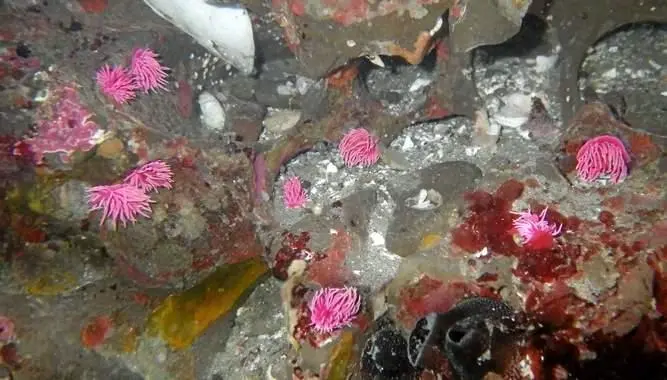Ecology in Motion
Hopkin's rose nudibranch (credit: Institute of Marine Sciences, UCSC )
Ecosystems are always responding to environmental conditions and adapt as factors change. It is all about the time involved. If not disturbed, environments are stable over centuries and maintain relatively static assemblages of plants and animals. Ecosystems can display abrupt changes when a stressor alters this basic stability and can become altered in a shorter time period of a few years or decades. This can be most easily observed at the boundaries of stable ecosystems (ecotones) such as timberlines and coastal tidal zones. Several species are now showing population and movement shifts at these tension zones.
In the coastal bays of California's central coast, sea slug species (nudibranchs) are moving north as water temperatures rise and affect their distribution. Hopkin's Rose, a bright pink sea creature, was once uncommon near the coastal town of Santa Cruz. They are now regularly seen by ecologists moving northwards to San Francisco bay area and even further north into Humboldt County near the Oregon border. The cause of their migration is directly related to seawater temperatures. Further monitoring will help quantify the long-term trends but the nudibranchs offer an easy opportunity to gather data on ecological changes in these marine environments.

Hopkins rose nudibranch migrating (credit: Institute of Marine Sciences, UCSC)
Other species show similar movements in response to increasing temperature. Conifers in the Arctic are colonizing formerly tree-less tundra shrublands. Pikas, those small chirping rodents of the mountainous zones of the Western USA, may be running out of places to move as they are already at the top of their limited alpine habitats. Publishing their finding in the Journal of Biogeography researchers at the Institute of Arctic & Alpine Research in Colorado report:
"The American pika appears to have experienced climate-mediated upslope range contractions and may be subjected to above-average exposure to climate change because summer temperatures are projected to rise more than annual temperatures."
Likewise, a report from the Alps showed the Effects of Climate Change on the Tree Line in Austria.


American Pika (credit: UC-Boulder/INSTAAR, Chris Ray) Arctic treeline expansion (University of Alberta)
Pink marine sea-slugs (a mollusk), alpine pikas (an alpine mammal), and tough pines (conifers) from ecosystems far apart are telling us something is happening in an accelerated rate. Each of these species is being affected by the same environment factor, increasing temperatures. They are trying to adapt to the changes fast. It is not difficult to connect-the-dots and understand why. WHB